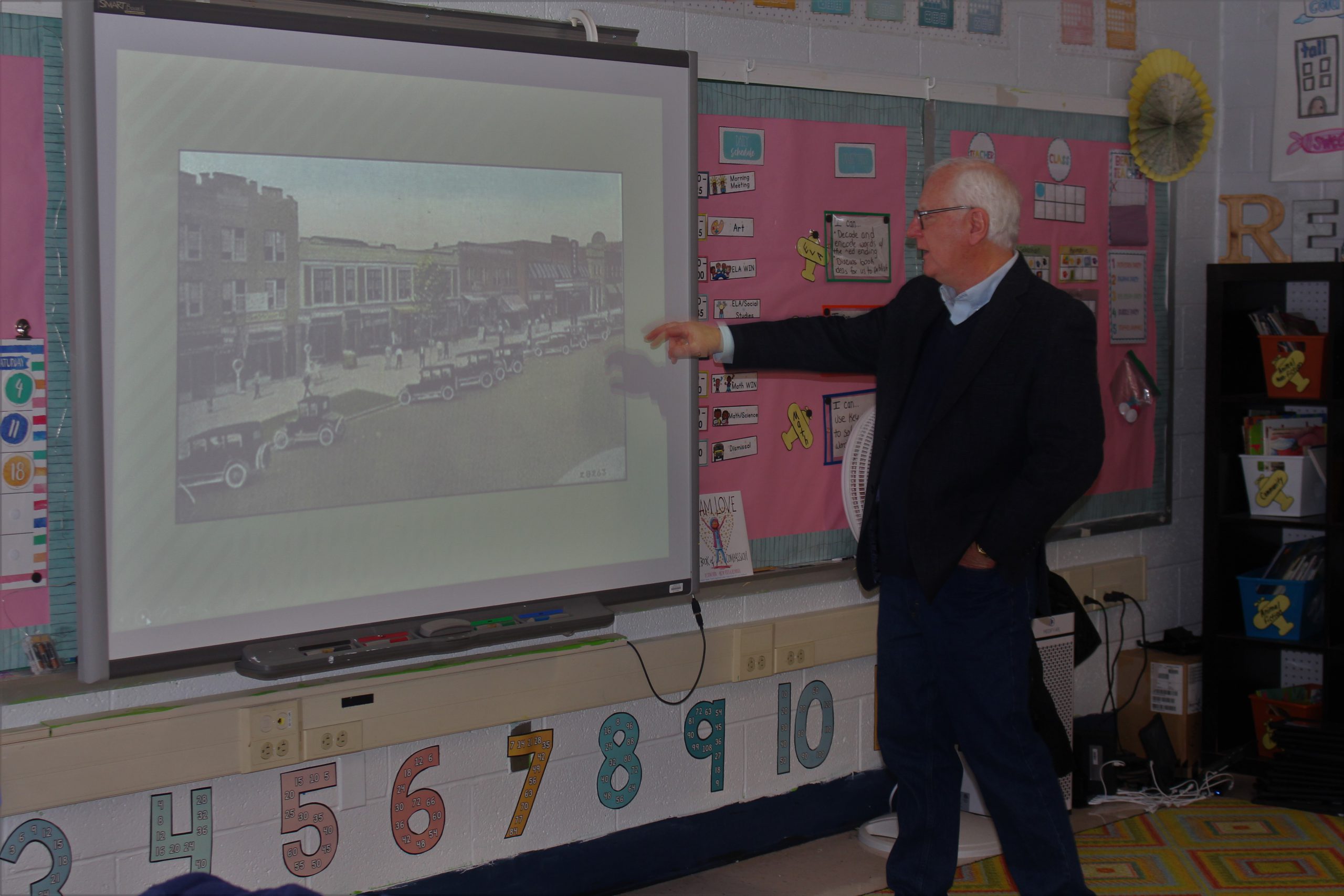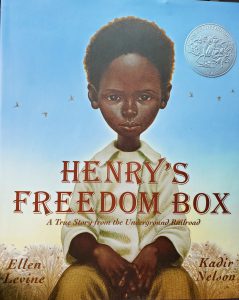
Did you know that there used to be an amusement park where the Sullivan County Government Building currently stands? Or that the George L. Cooke Elementary School was once the site of a tannery? Or that there was once a time where you could just walk down to Broadway and buy anything you need? Students in Ms. Dutcher/D’Agata and Ms. Ruston’s second-grade classes learned this, and many more interesting history tidbits, thanks to a visit from Sullivan County Historian John Conway.
“I really love the word ‘community’,” Mr. Conway said during his introduction to the class. “The root word of ‘community’ is the same root word as ‘common,’ and it’s such a great word because everyone who lives in a community has things in common.”

Mr. Conway shared a presentation with the students showcasing Monticello through the decades, beginning with the village’s founding days all the way up to the present. He grew up in Rock Hill and attended Monticello schools in his youth, even once meeting the actual George L. Cooke for whom the current school is named. He shared what it was like to grow up in Monticello, and how different Broadway looked back then bustling with soda fountains, bookstores, toy stores, clothing stores. He talked about what a big moment it was when Woolworth opened up shop, and how you could buy anything from a winter coat to a pet fish there. He also shared stories about how he and his friends would sneak into the Professional Building to ride the elevator because it was the first and only building at the time to have such a novelty.
 Students had been learning about the Underground Railroad in class, and had heard rumors that Monticello had once hosted a station. They asked Mr. Conway if he had any information about that, and he explained that when a place is a secret, as was the Underground Railroad, it is difficult to confirm since there are often no records. He said that although there is no evidence to support that there was an Underground Railroad station in Monticello, that there is evidence that the population of the town did not support slavery. He shared a documented story about how a family from Virginia spent the summer Monticello in the 1800’s with their slaves in tow. The locals in town decided to help the slaves break free while they were loading up the carriage to return to Virginia. This group of locals captured the slaves and helped them to escape to freedom in Canada. The students then began to tell Mr. Conway about a book they’ve been reading in class called Henry’s Freedom Box, which tells the story of an enslaved Black man who hid in a box in 1849 and shipped himself to Philadelphia, thus escaping slavery.
Students had been learning about the Underground Railroad in class, and had heard rumors that Monticello had once hosted a station. They asked Mr. Conway if he had any information about that, and he explained that when a place is a secret, as was the Underground Railroad, it is difficult to confirm since there are often no records. He said that although there is no evidence to support that there was an Underground Railroad station in Monticello, that there is evidence that the population of the town did not support slavery. He shared a documented story about how a family from Virginia spent the summer Monticello in the 1800’s with their slaves in tow. The locals in town decided to help the slaves break free while they were loading up the carriage to return to Virginia. This group of locals captured the slaves and helped them to escape to freedom in Canada. The students then began to tell Mr. Conway about a book they’ve been reading in class called Henry’s Freedom Box, which tells the story of an enslaved Black man who hid in a box in 1849 and shipped himself to Philadelphia, thus escaping slavery.

As the presentation wrapped up, the students shared what surprised them most and what they would like to see return to Monticello. The idea of the amusement park returning was a big hit, as was the soda fountains.
“I wish the toy store and arcade would come back,” one student said. “There are too many grown up stores now.”
To thank Mr. Conway for visiting the class, the students and teachers all signed the inside of a copy of Henry’s Freedom Box, along with a heartfelt thank you note for taking the time to teach them more about their own community.
